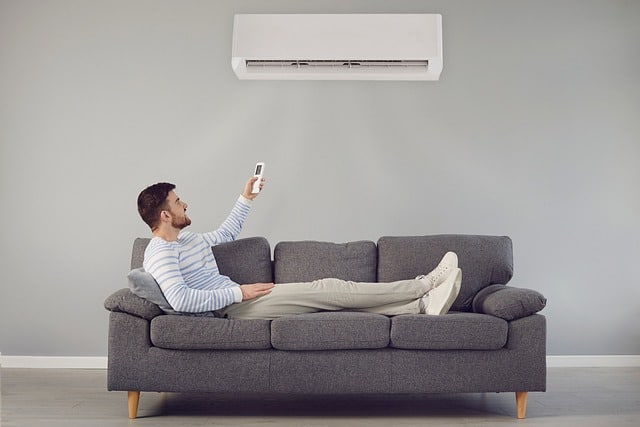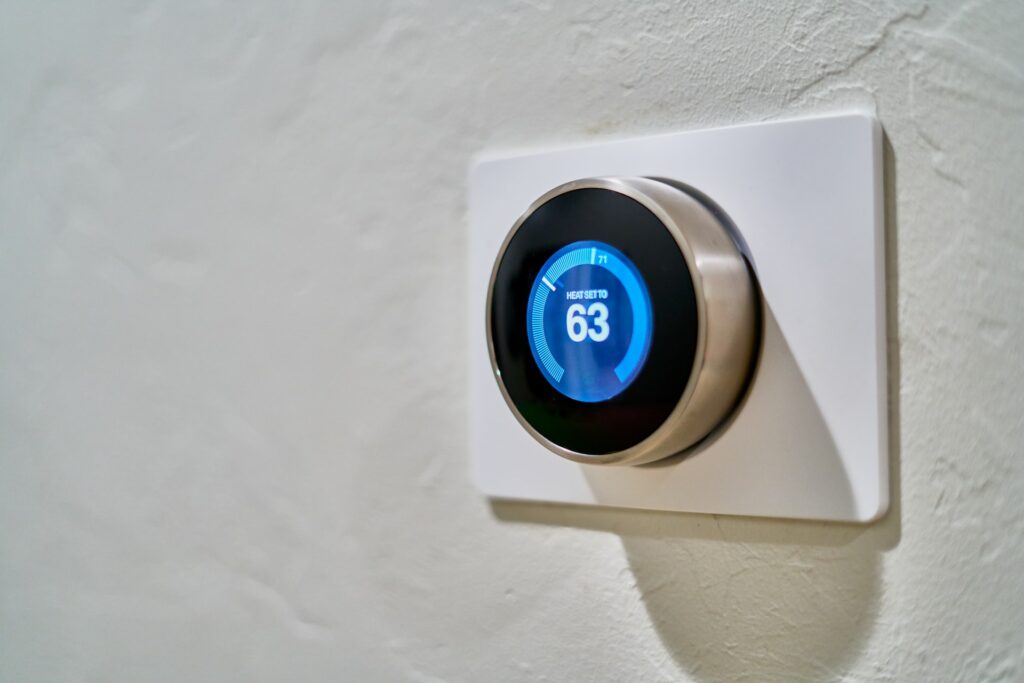Introduction – Eco Friendly Air Conditioning
Air conditioning is super helpful, providing comfort in hot weather and regulating temperatures indoors. It is also a major energy guzzler, contributing to climate change and higher electricity bills.
Fortunately, people who want to reduce their energy consumption and help the planet can choose from a wide range of eco-friendly air conditioning solutions.

Our Approach: 7 Eco-Friendly AC Solutions
We present 7 very different choices, from Energy Star-certified air conditioners, designed to use less energy and reduce greenhouse emissions, to geothermal air conditioners that leverage natural energy sources.
1. Energy Star-Certified Air Conditioner
Energy Star-certified air conditioners are the most efficient and eco-friendly option available on the market. These units are designed to meet stringent energy efficiency guidelines by the Environmental Protection Agency (EPA).
These air conditioners use up to 15 percent less energy than traditional models, helping you save money on your electric bills while reducing your environmental impact. Many companies produce Energy Star-certified AC units.
LG: LG’s LW8016ER is an example of an Energy Star-certified unit.
GE Appliances: GE’s AHC08LY model also has the Energy Star label. Note, GE has sold off its home appliances division to Haier and has given them the rights to use the GE name.
Frigidaire: Frigidaire’s Gallery Cool Connect FGRC0844S1 is another example.
For a comprehensive list of Energy Star-certified air conditioners, you can visit the EPA’s Energy Star website specifically the page on certified central air conditioners.
2. Air Source Heat Pump
Heat pumps are eco-friendly air conditioners that use electricity to draw energy from the environment – such as air or the earth – and transfer it directly into your home.
Unlike traditional air conditioning units, heat pumps do not generate heat; instead, they transfer heat by using a refrigerant to absorb warmth from a source, like the air or ground, and release it elsewhere.
They are exceptionally efficient at using energy and can save up to half of what you normally spend on cooling in the summer months. Heat pumps also have a built-in heating system in cold weather for easy year-round comfort inside your home.
Although their upfront cost can be more expensive than other alternatives, these eco-friendly HVAC systems start recouping expenses over time due to their lower operational costs and high-efficiency rating.
Three examples of heat pumps.
Daikin: Offers an extensive range of Energy Star-certified heat pump systems.
Trane: Known for their durability, their heat pumps are highly rated.
Carrier: Their Infinity series includes some highly efficient heat pump options.
3. Ductless Mini-Splits
Ductless mini splits offer an eco-friendly alternative to traditional air conditioners. Perfect for room additions, attics, garages, or even refurbishing old homes, these split systems cost less and are easy to install and maintain.
Unlike a central system, which sends cool air through heavy ducts in the walls, these mini splits use one small outdoor unit that transfers refrigerant to multiple indoor units placed throughout the home.
This important feature offers flexibility in temperature control and allows you to customize each room’s desired cooling level. They are energy efficient, too, with SEER ratings as high as 22, significantly higher than conventional systems.
With quiet operation, no ductwork necessary, and eco-friendly features such as inverter technology, they make a great choice for eco-conscious homeowners looking for reliable cooling all year round.
While these overlap with the heat pumps above, we list choices here:
Mitsubishi Electric: Their MUZ-FH series is well-regarded.
Fujitsu: They produce the Halcyon line of ductless mini-split systems.
Panasonic: Offers high-efficiency ductless mini-split systems.
4. Smart Thermostats

Smart thermostats are an eco-friendly and energy-efficient way to manage your home’s temperature. Using the latest technology, these gadgets can detect when you’re home and automatically adjust the air conditioning to save energy.
They are designed with a user interface that is simple to operate, allowing you to easily monitor your air conditioner’s performance.
Many smart thermostats can be controlled remotely through smartphone apps, allowing users to adjust settings even when they’re away from home
With temperature scheduling and real-time alerts, a smart thermostat makes it easy to adjust your settings quickly while ensuring optimal temperatures are maintained throughout your home.
Nest: Their Learning Thermostat is popular and highly rated.
Ecobee: The ecobee SmartThermostat with voice control is known for its energy-saving features.
Honeywell: Offers a range of smart thermostats, including the T9 model.
One consideration: older homes have less wiring to control standard thermostats which limits the range of smart thermostats. But within that limited range, there are innovative, very high quality solutions. These are the so-called “2-wire” smart thermostats.
5. Geothermal Air Conditioner
The geothermal air conditioner is an eco-friendly alternative for home cooling and heating. This type of air conditioner connects a series of pipes to your home’s existing water system, allowing heat transfer between indoors and outdoors.
Geothermal systems are more efficient and utilize natural heat from the earth, they do still consume electricity to operate the pumps, compressors, and fans.
Once installed, geothermal air conditioners require little maintenance while providing superior energy efficiency and comfort.
With consistent temperatures throughout all seasons, you can save big on monthly utility bills with this innovative eco-friendly solution.
In a water-to-air geothermal heat pump system, the process works as follows:
- Heat Absorption: A series of pipes, called a loop, is installed underground. This loop is filled with a fluid, typically water or a water/antifreeze mix, that circulates throughout the loop. During the winter, the fluid absorbs heat from the earth as it circulates through the loop.
- Heat Exchange: The now heated fluid returns to the heat pump unit inside the building. The heat from the fluid is then transferred to the air in a heat exchanger.
- Heat Distribution: The now heated air is distributed throughout the building via the existing ductwork, warming the building.
- Cooling Process: During the summer, the process is essentially reversed. The fluid in the loop absorbs heat from the air in the building and then dissipates it into the ground as it circulates through the loop.
WaterFurnace: Renowned for their geothermal heat pump systems.
ClimateMaster: They produce the Tranquility series of geothermal heating and cooling systems. Sometimes referred
Bosch: Their geothermal heat pump systems are highly regarded.
6. Solar-Powered Air Conditioner
Solar-powered air conditioning essentially means an air conditioning system that’s powered, at least partially, by solar energy. Solar energy is converted into electricity using photovoltaic (PV) cells, which is then used to power the air conditioning system.
Some systems, called hybrid solar air conditioners, use solar power to assist a traditional air conditioner, reducing the amount of electricity it needs to use. This can significantly reduce the cost of running the air conditioner and reduce its environmental impact.
The efficiency of solar-powered air conditioners will be influenced by geographical location and the number of sunny days in that location.
SolAir World: Their solar air conditioning system combines solar power and traditional AC.
Lennox: Their SunSource Home Energy System integrates with a solar-ready Lennox heat pump or air conditioner.
Gree: They offer solar-powered air conditioning solutions.
7. Evaporative Cooler
Evaporative coolers provide an eco-friendly solution to air conditioning. They use far less energy than traditional air conditioner units, leading to significantly lower electricity bills and reduced environmental impact.
An evaporative cooler is a simple device that works on the evaporation of water to cool air entering the home. These systems use water evaporation to create a refreshing breeze while consuming up to 75 percent less electricity than conventional air conditioners.
Evaporative coolers are most effective in dry climates. In humid areas, their efficiency drops significantly. Liquids evaporate poorly when the air is humid and is already full of moisture.
The process begins when warm air from outside passes through moistened filter pads, cooling off as it picks up water vapor from the pads and then moves through ducting into the house.
Fresh outside air continually circulates throughout without recirculating stale indoor air, so you can enjoy a clean, refreshingly cooled atmosphere inside your home!
Honeywell: Their indoor portable evaporative air coolers are popular.
Hessaire: Known for their outdoor evaporative coolers.
Bonaire: Offers a range of both portable and whole-house evaporative coolers.
Hybrid Or Packaged Units
In this article we ignored more complicated units that combine heating and cooling into a single set-up. The advantage of such units is the reduced space requirements and the one-time installation.
On the other hand, how often does a house come with no heating or cooling and everything needs to be replaced at once? Usually that happens during construction only.
If you’re interested in hybrid systems you could consult with a company or technician who specializes in them because they will have requirements that hit the inside and outside of your home and likely, a mix of energy present such as both natural gas and electricity.
Combining Technologies To Create An Eco Friendly AC Solution
The intersection of these eco-friendly solutions can lead to an optimized, energy-efficient, and sustainable climate control system. For example, one might install a geothermal air conditioner for overall heating and cooling, harnessing the earth’s natural temperature stability.
To augment this, a ductless mini-split system can be used in specific areas of the house, allowing precise control in spaces that are used more frequently. Integration of a smart thermostat can further enhance energy savings by automating and optimizing temperature controls based on personal habits and occupancy.
If the home is equipped with solar panels, these can power the air conditioning units, reducing reliance on grid electricity and capitalizing on renewable energy.
Furthermore, in dry climates, the use of evaporative coolers can supplement these systems, providing highly efficient cooling when the conditions are suitable.
By weaving together these various technologies, one can build a comprehensive, highly efficient, and eco-friendly home climate control system.
Final Thoughts – Insulation
One key aspect of an efficient air conditioning solution that is often overlooked is insulation. With top-of-the-line holistic insulation, you can achieve significant energy savings, reducing your energy costs by as much as 90%.
This remarkable energy efficiency improvement is the result of insulation’s capability to slow down the transfer of heat, keeping your home cool in the summer and warm in the winter.
Unlike many other energy-saving solutions, once the embodied carbon cost of producing and installing the insulation has been offset, insulation does not contribute further to carbon emissions.
It’s a truly eco-friendly solution that not only saves you money but also helps to protect our environment.
Despite these impressive benefits, most people don’t give enough consideration to insulation when they think about AC solutions.
Insulation, with its dual benefits of extraordinary energy cost savings and low environmental impact, should be at the forefront of any conversation about optimizing air conditioning systems.
Wrapping Up
Eco-friendly air conditioners offer numerous advantages over traditional models, including increased efficiency, improved performance, reduced environmental impact, and lower electricity bills.
The best part is that these systems can be tailored to suit your needs and climate region, providing a comfortable, cost-efficient solution that helps you stay cool while being kind to the planet.
By investing in one of these eco-friendly systems, you can save money on your utility bills and make a positive contribution to the environment.
